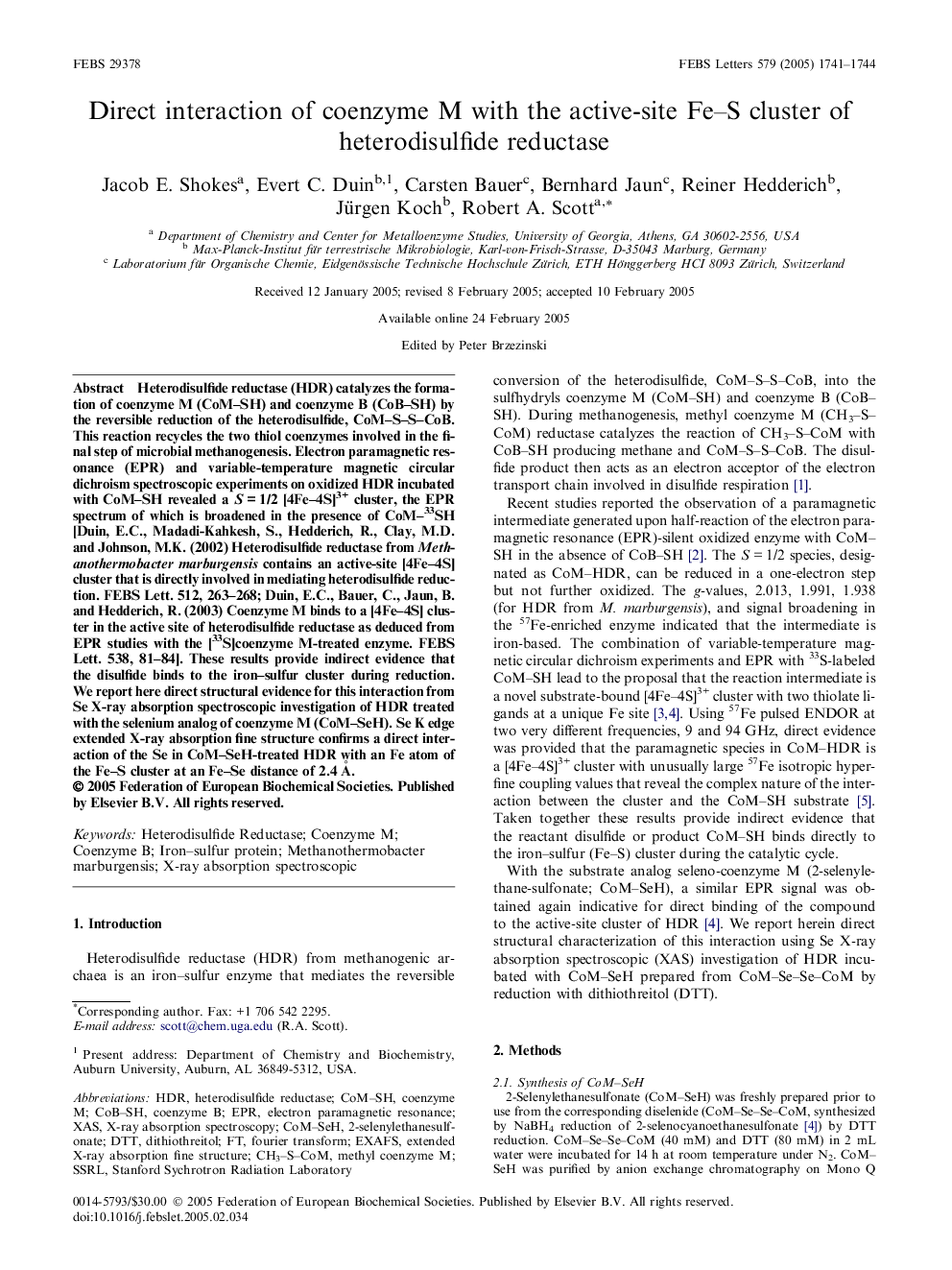| Article ID | Journal | Published Year | Pages | File Type |
|---|---|---|---|---|
| 10872899 | FEBS Letters | 2005 | 4 Pages |
Abstract
Heterodisulfide reductase (HDR) catalyzes the formation of coenzyme M (CoM-SH) and coenzyme B (CoB-SH) by the reversible reduction of the heterodisulfide, CoM-S-S-CoB. This reaction recycles the two thiol coenzymes involved in the final step of microbial methanogenesis. Electron paramagnetic resonance (EPR) and variable-temperature magnetic circular dichroism spectroscopic experiments on oxidized HDR incubated with CoM-SH revealed a SÂ =Â 1/2 [4Fe-4S]3+ cluster, the EPR spectrum of which is broadened in the presence of CoM-33SH [Duin, E.C., Madadi-Kahkesh, S., Hedderich, R., Clay, M.D. and Johnson, M.K. (2002) Heterodisulfide reductase from Methanothermobacter marburgensis contains an active-site [4Fe-4S] cluster that is directly involved in mediating heterodisulfide reduction. FEBS Lett. 512, 263-268; Duin, E.C., Bauer, C., Jaun, B. and Hedderich, R. (2003) Coenzyme M binds to a [4Fe-4S] cluster in the active site of heterodisulfide reductase as deduced from EPR studies with the [33S]coenzyme M-treated enzyme. FEBS Lett. 538, 81-84]. These results provide indirect evidence that the disulfide binds to the iron-sulfur cluster during reduction. We report here direct structural evidence for this interaction from Se X-ray absorption spectroscopic investigation of HDR treated with the selenium analog of coenzyme M (CoM-SeH). Se K edge extended X-ray absorption fine structure confirms a direct interaction of the Se in CoM-SeH-treated HDR with an Fe atom of the Fe-S cluster at an Fe-Se distance of 2.4Â Ã
.
Keywords
Related Topics
Life Sciences
Agricultural and Biological Sciences
Plant Science
Authors
Jacob E. Shokes, Evert C. Duin, Carsten Bauer, Bernhard Jaun, Reiner Hedderich, Jürgen Koch, Robert A. Scott,
